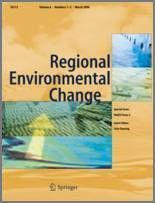Adaptive capacity determinants in developed states: examples from the Nordic countries and Russia


Abstract
Adaptive capacity in a community context has so far mainly been studied in developing countries as well as indigenous communities in the industrialised world. This article adds to that literature through reviewing studies undertaken in the Nordic countries and Russia, highlighting the ways in which general determinants of adaptive capacity play out in Northern, industrialised contexts. The paper illustrates that the determinants of adaptive capacity in industrialised states exhibit systematic differences from mixed subsistence-cash based communities such as those found in Arctic Canada. We discuss in particular the importance of economic resources in a market-based system, technological competition, and infrastructure, in determining adaptive capacity of natural resource-dependent communities in the Nordic countries and Russia. The paper also illustrates differences in adaptive capacity within the case study region, including between peripheral and central locations with regard to economic resources and diversification possibilities, and between Nordic and Russian cases with regard to infrastructure and technology access. The findings indicate that understanding of determinants of adaptive capacity in resource-dependent communities would benefit from both further contextualisation and broad comparison, across different types of political and administrative systems.
Conclusion
The study suggests that, although the determinants are applicable across the cases, existing categories are very broad and should be defined further according to the characteristics that distinguish particular localities such as degree of market integration and type of governance system. While subsistence-based communities may, to a larger extent, be able to take decisions affecting the community in an increasingly globalised world, even traditional or indigenous communities and sectors in these cases have a high dependence on international markets and will be impacted by decisions made elsewhere.
Citation
Keskitalo, E.C.H., Dannevig, H., Hovelsrud, G.K., West, J.J. and Swartling, A.G., (2011). Adaptive Capacity Determinants in Developed States: Examples from the Nordic Countries and Russia. Regional Environmental Change 11(3): 579-592
(0) Comments
There is no content